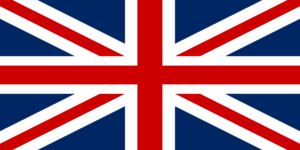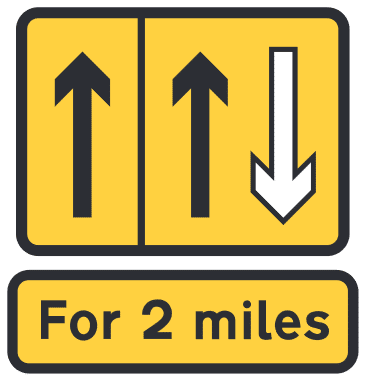What should you do when you’re using a contraflow system?
What should you do when you're using a contraflow system?
What is a contraflow system?
In a contraflow system, the traffic permitted to use a contraflow lane travels in the opposite direction to traffic in the other lanes on the road. They can be permanent, as in the case of contraflow bus lanes, or temporary, as in the case of road works.
When approaching a contraflow system, reduce your speed in plenty of time and obey all speed limits.
When driving in a contraflow system, you’ll be travelling close to oncoming traffic and sometimes in narrow lanes. You may be driving in a lane with no permanent barrier between you and the oncoming traffic.
You need to also be aware that the hard shoulder may be used for traffic and that the road ahead could be obstructed by slow-moving or broken-down vehicles.
Contra-flow bus lanes
This sign shows that there is a contra-flow bus lane. The upward arrows indicate the number of traffic lanes available.
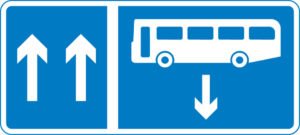
Contra-flow bus and cycle lanes
This sign indicates there is a contra-flow bus and pedal cycle lane on the road at the junction ahead.
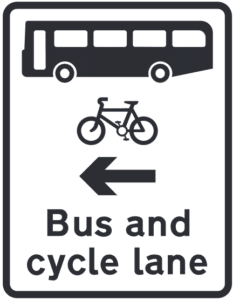
Road markings for a contra-flow lane
Here is an example of road marking for a contra-flow bus lane that is also used by cyclists.
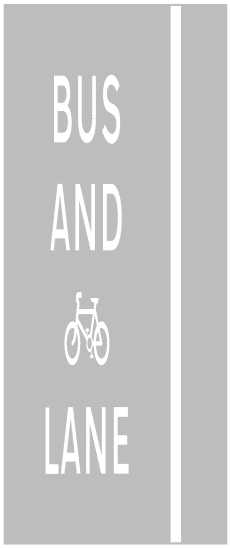
Temporary contraflow lanes
The white downward-pointing arrow indicates a contra-flow traffic lane separated by traffic cylinders. Where the contra-flow lane is separated by a physical barrier or a buffer lane (a lane closed to traffic), the white arrow is not shown.
Where a contra-flow system operates, traffic cylinders are used to separate opposing flows of traffic in adjacent lanes.

The signs below show how lanes cross back from the opposite carriageway at the end of a contra-flow system.
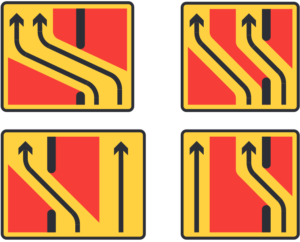
View more in the ‘Know Your Traffic Signs’ PDF from the DVSA.
Highway code references to contraflow systems
This rule is in the context of dual carriage ways:
One-way streets. Traffic MUST travel in the direction indicated by signs. Buses and/or cycles may have a contraflow lane. Choose the correct lane for your exit as soon as you can. Do not change lanes suddenly. Unless road signs or markings indicate otherwise, you should use
- the left-hand lane when going left
- the right-hand lane when going right
- the most appropriate lane when going straight ahead. Remember – traffic could be passing on both sides.
Laws RTA 1988 sect 36 & RTRA sects 5 & 8
This rule is in the context of additional rules for high-speed roads
Contraflow systems mean that you may be travelling in a narrower lane than normal and with no permanent barrier between you and oncoming traffic. The hard shoulder may be used for traffic, but be aware that there may be broken-down vehicles ahead of you. Keep a good distance from the vehicle ahead and observe any temporary speed limits.
More From This Topic
Popular Theory Test Questions

